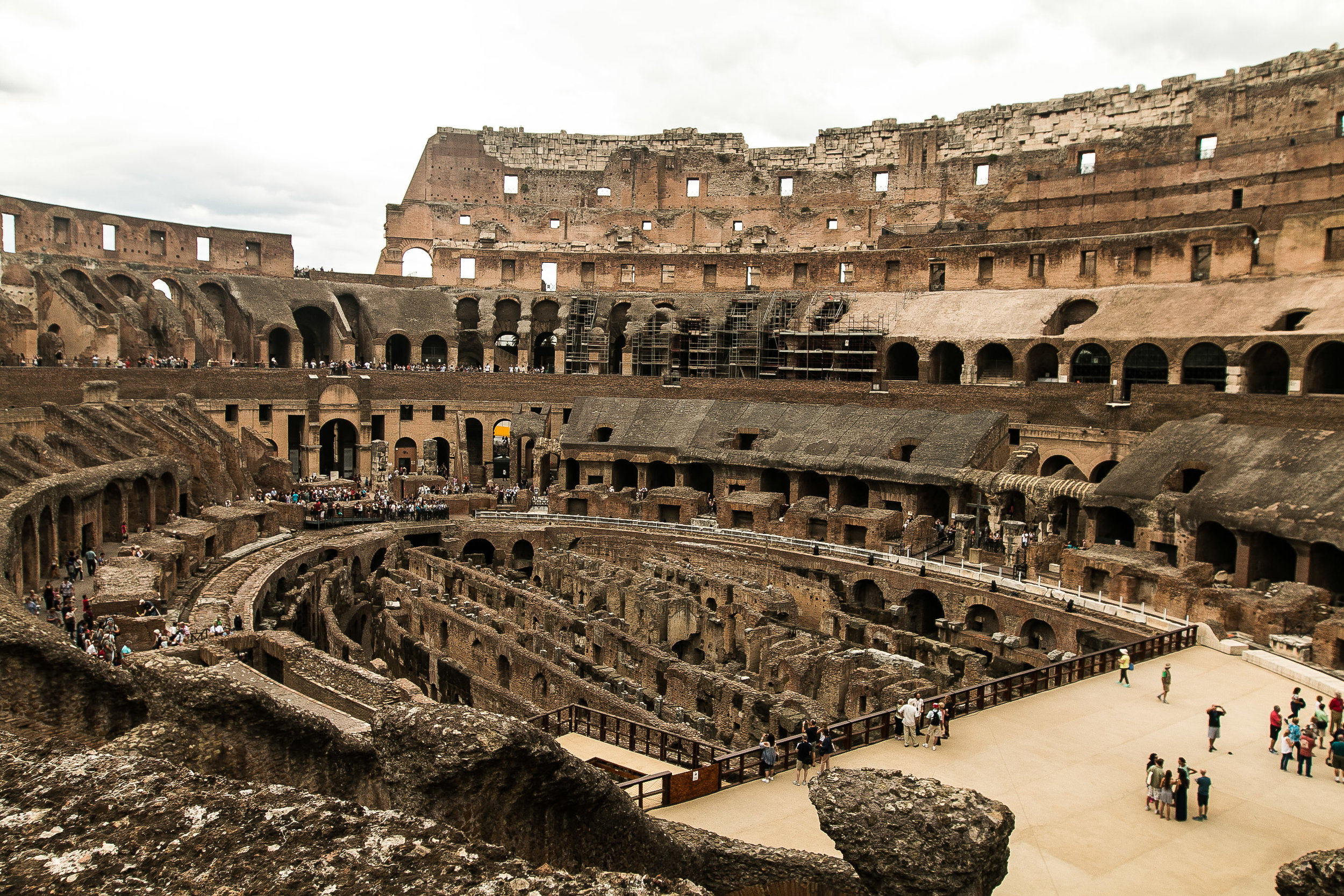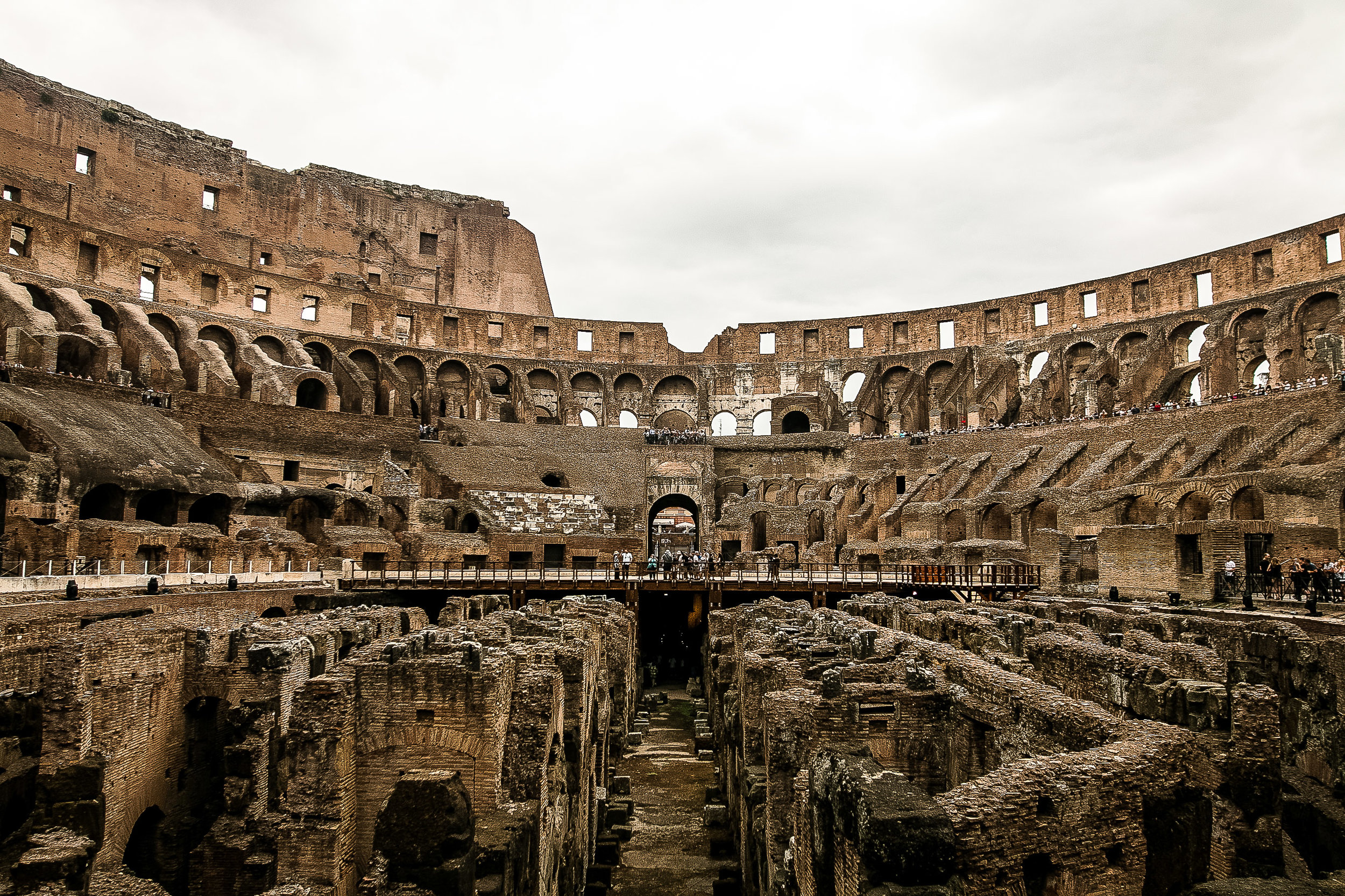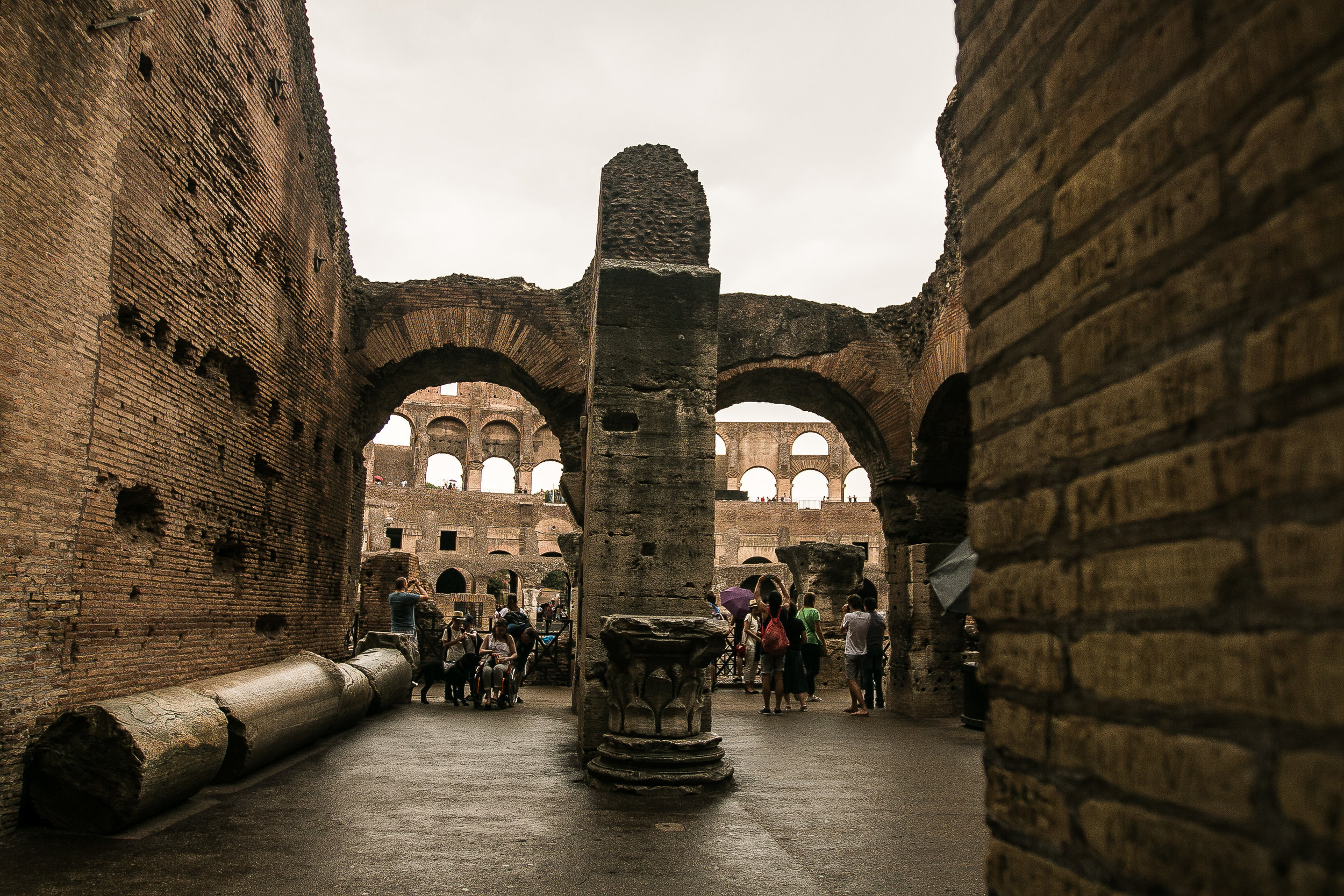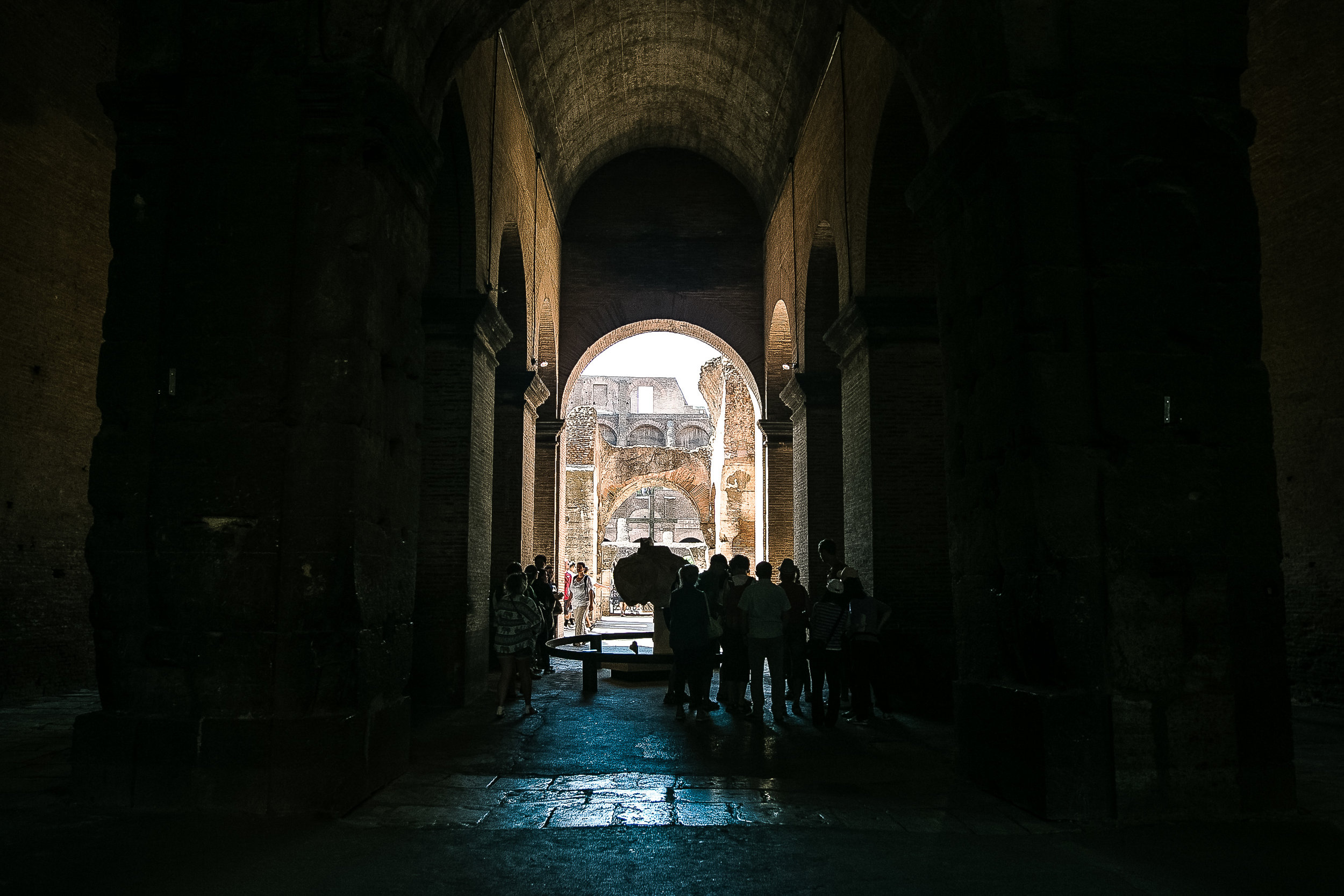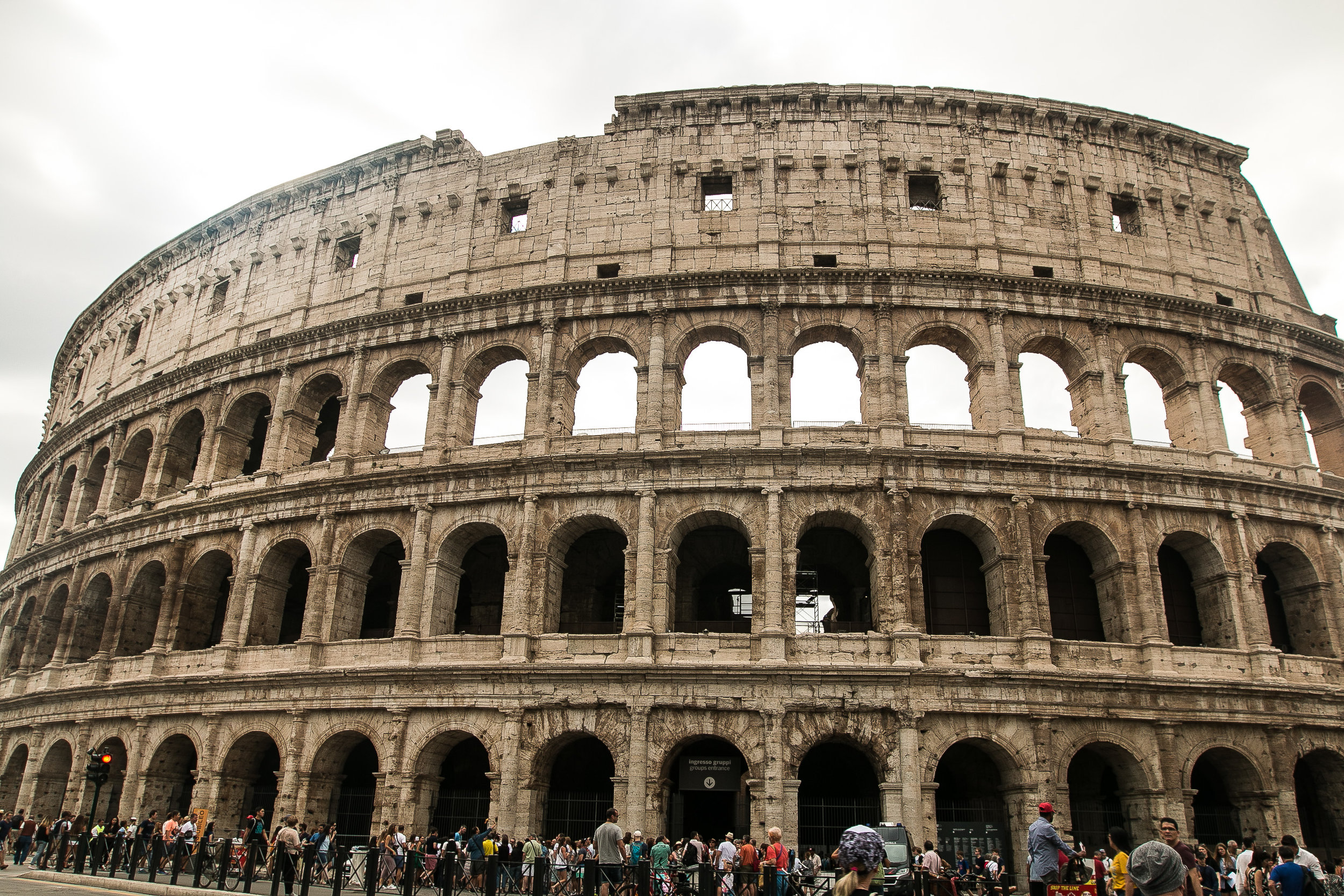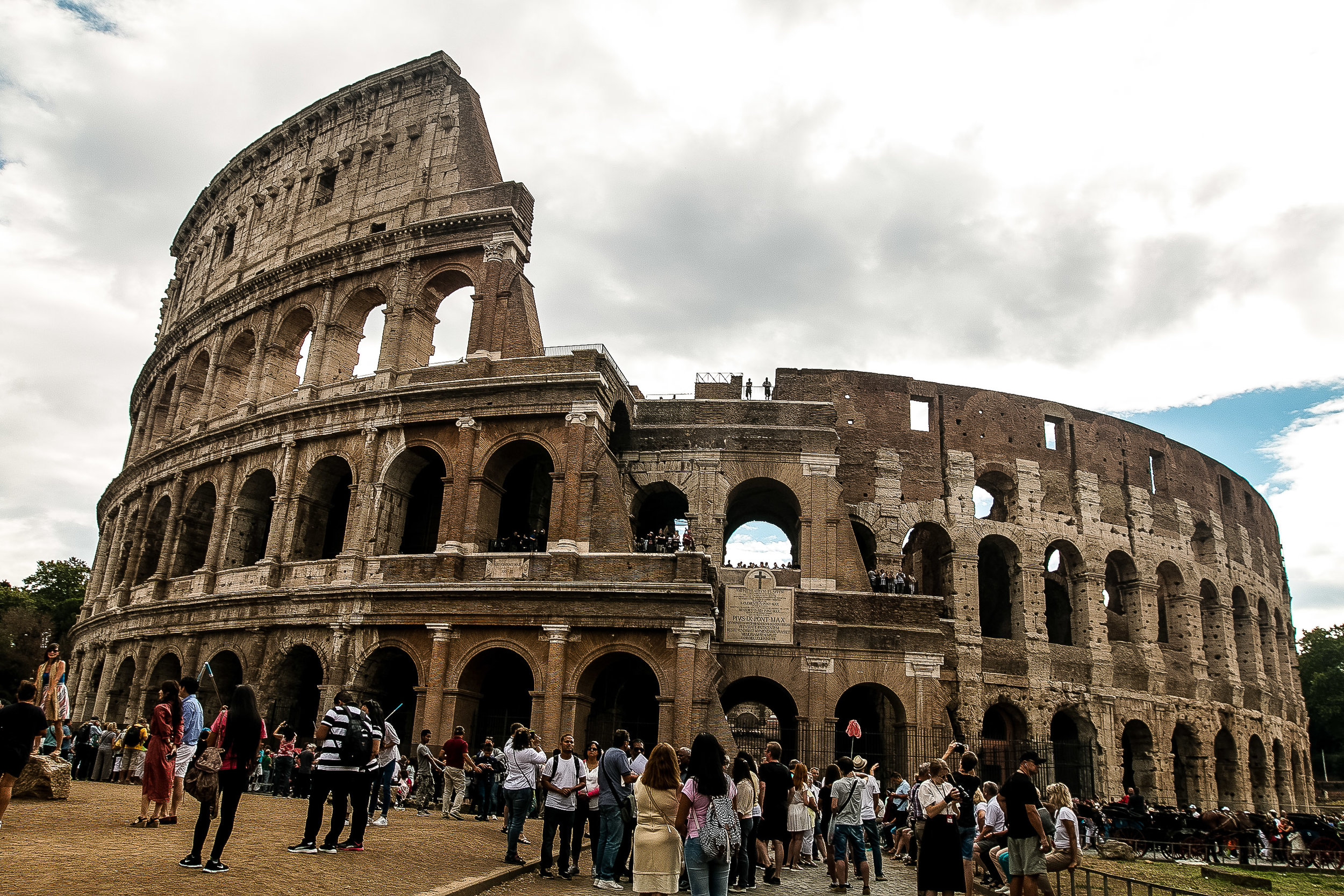The Colosseum in Rome.
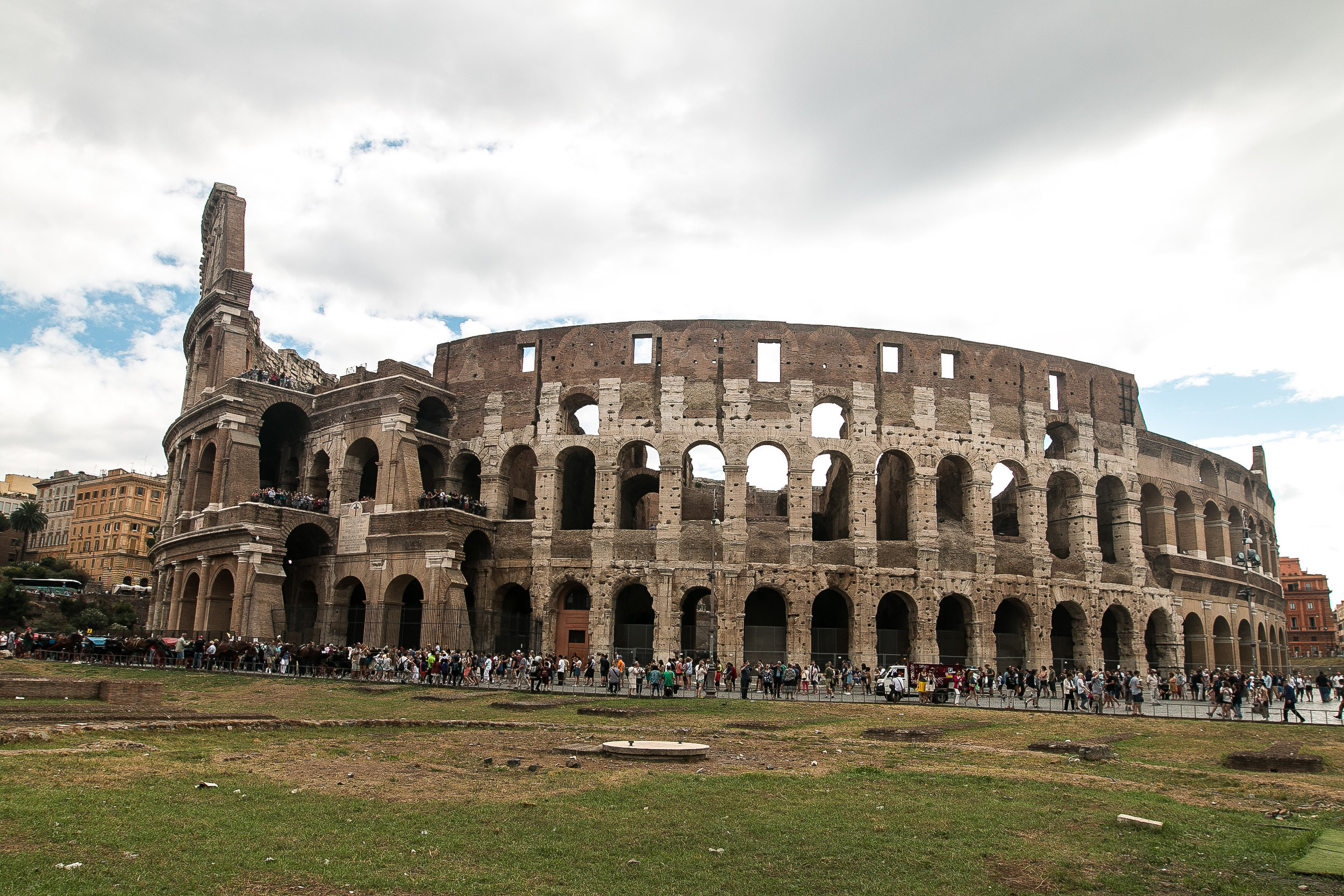
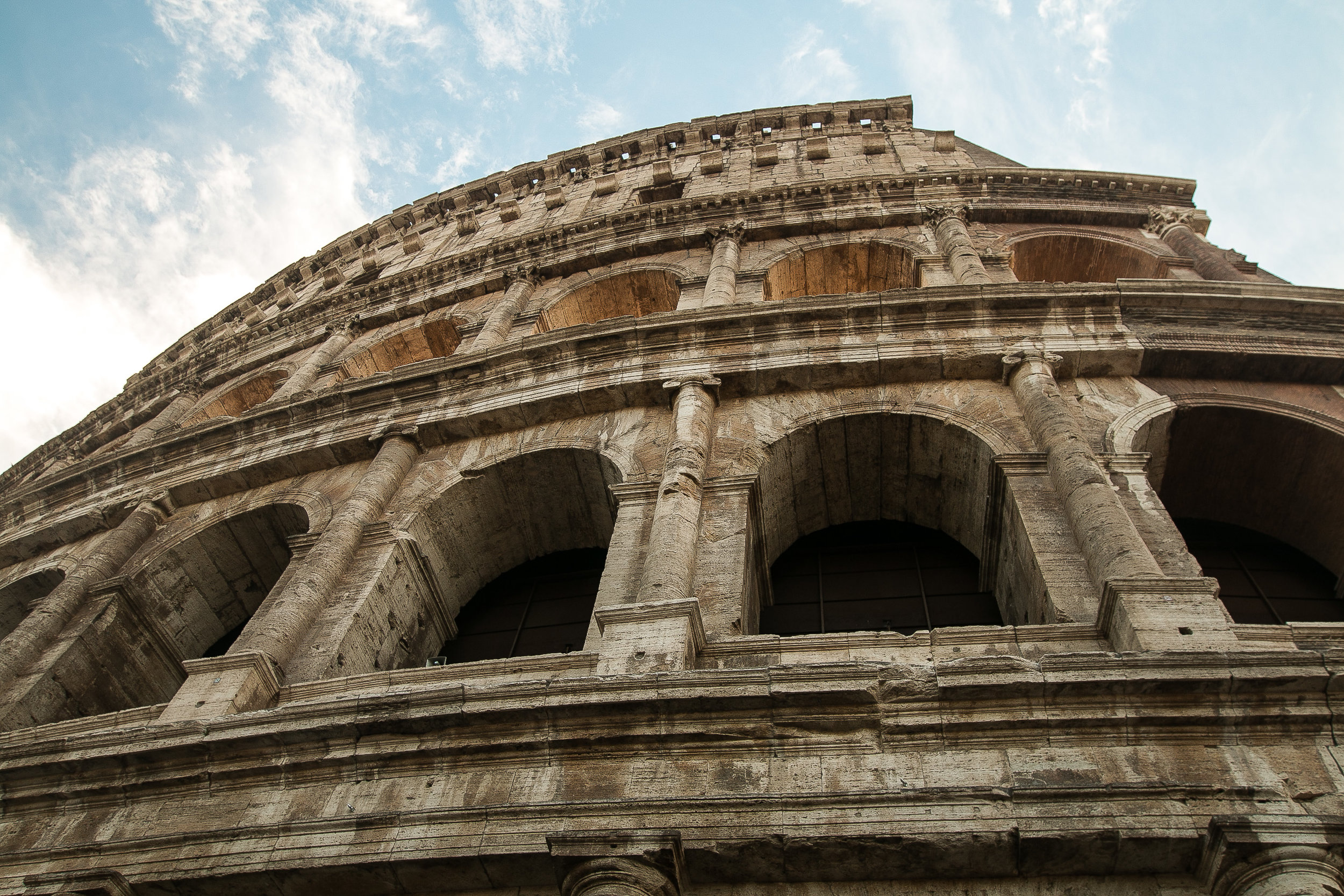
Unquestionably, one of the more astounding bits of human ingenuity to behold, the Colosseum in Rome, Italy, was first built between 70-80AD and got its name from the giant Nero statue erected nearby. This statue, named after the Colossus of Rhodes, was later remodelled by Nero's successors to represent Helios (also known as Apollo), the sun god.
Despite the Colosseum's historical relevance and alleged controversy with regards to killing various captured Christians and slaves for sport, one could also say that the Colosseum itself marked the beginning of pop-culture, as the "athletes" who fought there (not unlike today's athletes) became cultural icons of their time — celebrities, ultimately becoming the envy of many patrons who visited each show. Contrary to popular understanding, these athletes were not mere slaves fighting for Rome's amusement, but oftentimes free men who wished to take part in the games, so as to gain both fame and fortune. In addition to one-on-one duels, animal fights and ship battles also took place within the Colosseum's walls. Though the Colosseum contemporarily holds a rather "bloody" reputation, death by duel rarely occurred, as (1) each fighter had their own fan-base; thus, it was hard to sway the Cesar to present a "thumbs down", and (2) a lot of money went into building up each of these athletes. Hence, a death sentence was very costly and often only reserved for acts of extreme cowardice.
It is also interesting to note the relevance that the Colosseum holds with regards to modern-day leisure, as most of today's stadiums hosting various forms of entertainment; from concerts, to football games, to UFC fights, mirrors that of ancient Colosseum architecture. With such undeniable likeness to our modern-day amphitheatres, is it really far-fetched to think that we have barely changed at all (at least with regards to our minds)? "Bread and games," as Cesar would say, "give them bread and games... and we will control them all."



